Acupuncture & TCM Articles
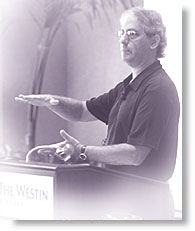
Articles by Jake Paul Fratkin, OMD, LAc
Jake Fratkin, OMD, LAc, has been in the practice of Oriental medicine since 1978. Following undergraduate and graduate training at the University of Wisconsin in Chinese language and philosophy and pre-medicine, he pursued a seven-year apprenticeship in Japanese and Korean style acupuncture with Dr. Ineon Moon and a two-year apprenticeship in Chinese herbal medicine with Drs. Zhengan Guo and Pak-Leung Lau in Chicago. He also spent a year in Beijing hospitals interning in advanced herbal medicine, specializing in gastrointestinal and respiratory disorders, and pediatrics. 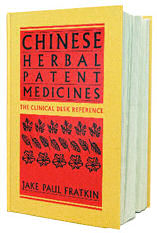 Dr. Fratkin is the author of several books, including Chinese Herbal Patent Medicines: The Clinical Desk Reference, and is the editor-organizer of Wu and Fischer's Practical Therapeutics of Traditional Chinese Medicine. In 1999, he was named the "Acupuncturist of the Year" by the American Association of Oriental Medicine.
Dr. Fratkin is the author of several books, including Chinese Herbal Patent Medicines: The Clinical Desk Reference, and is the editor-organizer of Wu and Fischer's Practical Therapeutics of Traditional Chinese Medicine. In 1999, he was named the "Acupuncturist of the Year" by the American Association of Oriental Medicine.
Chinese Herbal Patent Medicines: The Clinical Desk Reference
Hardback book, 1198 pages. This volume covers 1360 products, including 550 GMP level products and all of California FDB analysis on 505 products. Includes information on endagered animals, heavy metals, and pharmaceuticals. The text is organized into 12 groups, with a total of 109 chapters and includes material by Andrew Ellis, Subhuti Dharmananda, and Richard Ko. Over 80 pages of full-color photos (with English and Chinese cross-reference). Fully indexed.
The Emergence of Japanese Style Acupuncture
Interest in Japanese style acupuncture is growing greatly in the United States over the last several years. The recent publication of Stephen Birch and Junko Ida´s JAPANESE ACUPUNCTURE: A CLINICAL GUIDE has made a significant contribution to an already rich assortment of English language books. These include INTRODUCTION TO CLASSICAL JAPANESE ACUPUNCTURE by Denmai Shudo and Stephen Brown, CHASING THE DRAGON´S TAIL by Yoshio Manaka and Stephen Birch, and CLINICAL ACUPUNCTURE by Serizawa and Kusumi, as well as textbooks by Kodo Fukushima, Kiiko Matsumoto, and others. THE NORTH AMERICAN JOURNAL OF ORIENTAL MEDICINE, our tri-yearly publication, has also offered a rich fountain of information regarding the various techniques and philosophies of the Japanese approach.
ACUPUNCTURE IN JAPANESE HISTORY.
Buddhist monks brought Chinese medicine to Japan from China and Korea sometime before the 6th century C.E. The earliest record is that in 562 C.E., the monk Chiso (Zhi Cong) brought 164 books to Japan on acupuncture and herbal medicine. In 702 C.E. the Emperor established the Imperial Medical College, offering a seven year course in acupuncture and moxibustion, and a seven year course in herbal medicine. A three year program on massage was also offered. Oriental medicine grew and thrived until the end of the 12th century, after which it stagnated.
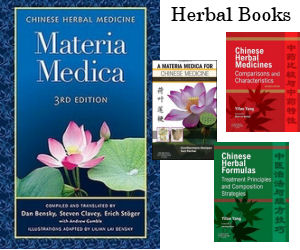
In the mid 1500s a resurgence in Oriental medicine´s popularity emerged, prompted in part as a reaction to western medicine introduced by Dutch scholars and traders. At this time, many commentaries were written concerning the Neijing and the Nanjing classics. Twelve meridian pulse positions became popular, competing with the 28 whole pulse diagnosis of Chinese herbal medicine. Also at this time, Isai Misono introduced abdominal palpation, a uniquely Japanese tool for diagnosis and treatment. Later, in the late 1600s, the blind acupuncturist Waichi Sugiyama introduced the insertion tube, allowing the use of finer, thinner needles. In the 1700s textbooks for pediatric Shonishin were published, encouraging pediatrics as a specialty.
Three trends emerged in the late 1700s that were to remain in place to modern times. In 1774 a textbook of anatomy, translated from the Dutch, made a profound impression on the Japanese medical community. This gave rise to the Rampo school, whose needling was based on anatomical location and nerve function rather than the qi approach of meridian or abdominal therapy. The Koho school also developed at this time. By studying Han dynasty medical works such as the Shang Han Lun, they developed Kampo, a uniquely Japanese approach to herbal medicine. The Gosei school also emerged, which sought to combine the ancient theory of the Nanjing classic with modern techniques and discoveries. This eventually gave rise to Meridian Therapy.
ACUPUNCTURE IN MODERN DAY JAPAN.
There are 52,000 licensed acupuncturists in modern Japan, and another 10,000 medical doctors practicing acupuncture. (Japan´s population is about 120 million, half that of the United States). It is reported that 40% of Japanese acupuncturists are blind. Blind people have traditionally been directed towards acupuncture or shiatsu massage as a career path.
Education for an acupuncturist is 2250 hours in a three year program. There are 54 acupuncture schools in Japan, of which 17 are exclusively for blind students. Enrollment is equally divided among men and women. There is not much theory or western medical science training, but 780 hours is devoted to needle and moxa technique training on inanimate objects, without using people.
It is expected that a graduate will have an apprenticeship with an established acupuncturist or clinic, and continue their education in weekend workshops. This apprenticeship usually lasts one to three years, and may go on ten or even twenty years. These apprenticeships are often observation without supervised practice. In the apprenticeships and postgraduate training, acupuncturists tend to gravitate to a particular school or style.
STYLES AND CHARACTERISTICS OF JAPANESE ACUPUNCTURE.
Introduction to Meridian Therapy
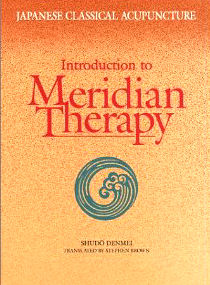 
Japanese acupuncture is actually a broad umbrella of schools and technical approaches. There are one hundred different associations in Japan, maintained by loyal, if not factionalized, post-graduate practitioners. About 20% follow Keiraku Chiryo, the school of classical meridian therapy. This approach includes the followers of Kodo Fukushima (the Toyo Hari School) and Denmai Shudo. Another 20% follow Rempo style, or scientific acupuncture, which is based on point selection without meridian theory. The other 60% include smaller associations that follow the teachings of various teachers such as Manaka, Sawada, Akabane, Nagano, and others. Chinese TCM also has a small but loyal following in Japan.
In spite of the diversity of styles, there are certain traits and characteristics that clearly define Japanese acupuncture. The first elevates palpation as the most important of the diagnostic arts. This includes feeling the pulse, abdomen and skin textures of acupuncture points and meridian pathways. Palpation dictates which points are chosen for treatment, rather than choosing according to disease or theory. The skill and refinement of palpation diagnosis has its basis in Shiatsu training, which many Japanese acupuncturists have studied.
Point location often is not at the exact location prescribed in traditional anatomical charts. The anatomical locations are starting places to search for the actual point on the patient, or what one Toyo Hari practitioner calls “the presently alive point’. Points reveal themselves as an energetic excess or deficiency, or by thermal or tactile distortions. A more subtle determination is the exact direction of the energetic vortex of the point deeper into the skin and flesh.
The idea that a point would be treated without palpation first is anathema to many Japanese practitioners. One, Mr. Ogawa, remarked in a workshop that he was surprised to see a Chinese doctor in Beijing holding numerous needles in his left hand, and moving down the patient´s arm and thrusting needles in without touching first, as if the arm was a dart board.
As an example of the finesse that is possible in palpatory diagnosis, I watched a blind master of the Toyo Hari tradition give instruction. As he felt the radial pulse on a prone student, he asked another student to locate LI 11 on the opposite arm. He said, “No, no, you must go a bit more proximal. There, that´s good.’ Then he ask the student to tonify the point with a needle. “No, no, your angle is wrong, your direction is not quite right. Also, it is too deep. There, that is better. Now extend your Ki up the meridian towards the shoulder. No, no, farther, farther. There, that is better’. All this was determined by the blind acupuncturist feeling the pulse on the other side of the body.
The second characteristic of Japanese acupuncture is a unique needle technique. The needles that are used are quite thin by comparison to those used in Chinese style acupuncture. Most practitioners will use needles with gauge #1 (.16 mm) or less. Denmai Shudo uses #OO (.12 mm) needles (green handle Serins) in all of his work. Insertion tubes are usually used, using a gentle rapid tapping. Many practitioners are so adept with insertion tubes, that they can pull and reinsert a needle back into the tube with one hand as they use the other hand to search for the next insertion. Many styles, particularly Meridian Therapy, use shallow insertion, sometimes as little as 1 mm. (The distance of the tip of the needle handle to the pipette in a wrapped Serin needle is 4 mm).
The third characteristic of Japanese acupuncture is confirming that the needle or moxa technique causes an immediate and noticeable change on that which was used for diagnosis: the pulse, the abdomen, or the point itself. This attention allows a smaller number of points to be chosen. Practitioners of Meridian Therapy for example expectthe affected pulse imbalances to change with correct needling. Followers of Matsumoto and Nagano expect abdominal points of pain to disappear after correct needling of distal points.
Fourth, adjunctive techniques are commonly employed to reinforce the primary treatment. Direct moxa is a commonly applied on many acupuncture points, with a size anywhere from a hair´s width to half rice grain. An experienced practitioner with a wad of moxa in his hand will roll, place and light it, all with a single hand. He or she can do five or seven cones within one minute. Other techniques commonly used are intradermal needles, press balls, magnets, and ion pumping cords.
JAPANESE ACUPUNCTURE IN AMERICA.
I would like to overview some of the characteristics of the more popular Japanese acupuncture schools of thought being taught in the United States. Common to most of these schools is a background in SAWADA STYLE. Ken Sawada, a famous moxibustion practitioner in the early part of the twentieth century, indicated that most patients would benefit from stimulation of general acupuncture points, regardless of their specific complaints. Treatment would preferably be by direct moxa (5 to 7 cones) or moxa needle. These include Ren 6 (or 5), Ren 12; Du 20, Du 12, Du 4; LI 4 or LI 11; TW 4; St 36; and SP 3, among others. Also, selected kori (subdermal hardenings) along the neck and back are treated. Workshops in moxibustion alone are beginning to be offered in North America, most notably by Junji Mizutani of Vancouver.
MIKI SHIMA. Dr. Shima, a practitioner in San Raphael, California, has been a strong educational force since the mid 1980s. He devotes attention to secondary channel treatments, including Eight Extraordinary Channel Therapy, Divergent Channel Therapy, and Tendino-Muscular Therapy. His own technique, Somato-Auricular Therapy (SAT), combines ear points with secondary channel point therapy. It is effective for chronic organ problems as well as various pain presentations. Dr. Shima has also promoted the AKABANE system, a method of diagnosing meridian imbalances by timing heat reactions on the jing-well points, as well as Kampo herbal medicine and the finer points of needle-moxa technique and abdominal diagnosis.
KIIKO MATSUMOTO. Kiiko has enthusiastically introduced Japanese techniques to American practitioners for the last twelve years. She teaches Nagano style, basing point selections on distal pain presentations. When areas of pain are found by palpation, pressure is applied to distal points until a point is found which makes that pain disappear. This becomes the point that is chosen for treatment. Her work often is complaint centered, including specialized treatments for scars, injury, gynecology, and facial cosmetics. She is co-author of numerous books on Japanese theory and practice, including the brilliant Hara Diagnosis: Reflections on the Sea  . .
MERIDIAN THERAPY. This is the classical Nanjing system of acupuncture that was revived in the 1920s by the dedicated Japanese practitioners Yanigiya, Inoue, and Okabe.. It concentrates on correcting the root imbalance, followed with Sawada style branch treatment. One of four basic patterns of deficiency and excess is determined, based on pulse and abdomen diagnosis. The root imbalance is corrected with a minimum of needles before branch treatment is started. This system has been best articulated in English by Denmai Shudo and Stephen Brown in Japanese Classical Acupuncture: Introduction to Meridian Therapy  . Five element acupuncture according to Worsley was actually based on this particular tradition (the story goes that Worsley went to a weekend workshop given by a German who had taken a workshop from Yanagiya), although the refined Japanese needling skills and branch treatments were never transmitted. . Five element acupuncture according to Worsley was actually based on this particular tradition (the story goes that Worsley went to a weekend workshop given by a German who had taken a workshop from Yanagiya), although the refined Japanese needling skills and branch treatments were never transmitted.
TOYO HARI. This is a dedicated school within the Meridian Therapy tradition that is based on the teachings of Kodo Fukushima, a blind acupuncturist of the mid-twentieth century. His work is available in English as MERIDIAN THERAPY, and provides an excellent advanced textbook. The Toyo Hari association employs the Kozato training method, a study group that meets once or twice weekly to practice pulse diagnosis and needle technique. Their needle technique is very shallow or non-insertion, and they have specific branch treatments for various complaints. Toyo Hari offers a one year a course of study in various localities, including Boston and Seattle.
SENSEI NAKASONE. Recently deceased, Sensei Nakasone had an intensive three year training in Santa Fe, New Mexico during the 1980s. Based on classical Meridian Therapy, their pulse diagnosis is based on fin gei, the comparison of radial and carotid pulses combined with abdominal palpation. Practitioners of Nakasone style also had a strong background in macrobiotic dietary and adjunctive therapy. Although not commonly taught, graduates of the Nakasone program have emerged as successful practitioners in Japanese style.
YOSHIO MANAKA's work has been collected and organized by Stephen Birch in Chasing the Dragon's Tail . Manaka has proven to be a great innovator. Starting in World War II when he discovered that using ion pumping cords could relieve pain in burn victims by moving areas of heat to more normal areas, he has gone on to make many clinical discoveries. His work on Eight Extraordinary Channels has been pivotal in revitalizing this secondary acupuncture network for treatment. He has also promoted the use of hinaishin (tiny intradermal needles) and Sotai exercises for structural alignment. . Manaka has proven to be a great innovator. Starting in World War II when he discovered that using ion pumping cords could relieve pain in burn victims by moving areas of heat to more normal areas, he has gone on to make many clinical discoveries. His work on Eight Extraordinary Channels has been pivotal in revitalizing this secondary acupuncture network for treatment. He has also promoted the use of hinaishin (tiny intradermal needles) and Sotai exercises for structural alignment.
In conclusion, American acupuncturists trained in TCM are becoming interested in the techniques offered in Japanese acupuncture. It represents a sophisticated and refined application of hand skills, restoring acupuncture to the status of art as well as medicine. Patients gravitate towards the Japanese style, because it is painless as well as effective, and because touching is a valued aspect of treatment. TCM acupuncture has its place when disease or disorder is well defined, and specific point combinations can be effectively employed. But for the majority of patients whose complaints are multi-layered, and where TCM differentiation becomes muddied, Japanese style is a successful approach. It teaches that the points requiring treatment are found with the fingers, not the mind, and that in spite of the complaint, effective therapy is delivered when the body is restored to its intrinsic balance.
(Note: Information on the history and practice in Japan was based on lectures and material given by Stephen Birch. For this and any other aspects of the article, all mistakes, errors and opinions are solely mine, and I apologize if I misrepresented or excluded any important information.)
RECOMMENDED READING
Chasing the Dragon's Tail by Yoshio Manaka and Stephen Birch, Paradigm Publications, 1995. by Yoshio Manaka and Stephen Birch, Paradigm Publications, 1995.
Clinical Acupuncture: A Practical Japanese Approach  , Katsusuke Serizawa and Mari Kusumi, Japan Publications, 1988. , Katsusuke Serizawa and Mari Kusumi, Japan Publications, 1988.
Hara Diagnosis: Reflections on the Sea  , Kiiko Matsumoto and Stephen Birch, Paradigm Publications. , Kiiko Matsumoto and Stephen Birch, Paradigm Publications.
Japanese Classical Acupuncture: Introduction to Meridian Therapy  by Denmai Shudo, translated by Stephen Brown, Eastland Press, 1990. by Denmai Shudo, translated by Stephen Brown, Eastland Press, 1990.
Japanese Acupuncture: A Clinical Guide  , Stephen Birch and Junko Ida, Paradigm Press, 1998. , Stephen Birch and Junko Ida, Paradigm Press, 1998.
Meridian therapy , Kodo Fukushima, Toyo Hari Medical Association, 1991. , Kodo Fukushima, Toyo Hari Medical Association, 1991.
NORTH AMERICAN JOURNAL OF ORIENTAL MEDICINE, 896 W. King Edward Ave, Vancouver, BC, V5Z 2E1.
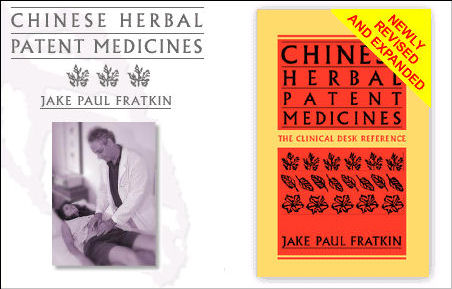 
|
